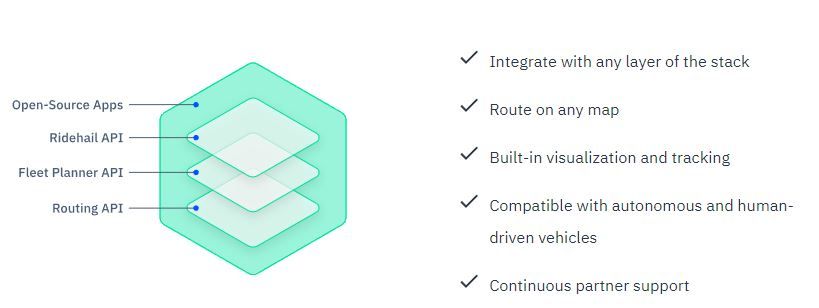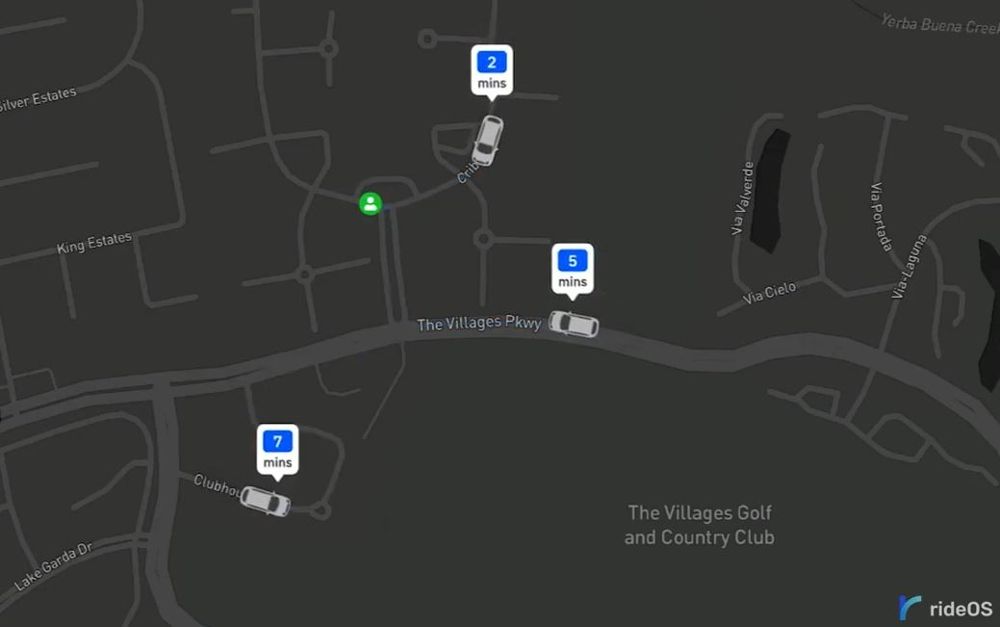The developers of a technology platform designed to accelerate the safe, global rollout of next-generation transportation fleets, rideOS has launched its new Ridehail Platform that includes an API (Application Programming Interface) and open-source mobile apps.
California-based company rideOS designs and builds next-generation marketplace and mapping services that can be used by ride-hailing companies, OEMs, logistics providers and governments, to operate mobility on-demand (MOD) transportation services for both self-driving and human-operated fleets. The company’s new Ridehail API offers an easy way for automotive original equipment manufacturers (OEMs), autonomous vehicle (AV) companies, and transportation network companies (TNCs) to create and manage their own ride-hailing network using rideOS’ underlying technology. The Ridehail API is available as a standalone backend API, or through new open-source driver and rider apps for Apple and Android devices. This is the first time a set of ride-hailing applications have been open-sourced, allowing customers to easily rebrand or build new features on top of these new applications.

The rideOS Ridehail Platform is the only routing and dispatching product that is base-map agnostic and compatible with both human-driven and automated vehicles. The Platform offers customers the flexibility to choose from a variety of integration points across the technology stack, including:
- Open-Source Apps to quickly deploy fleets with virtually no integration time. Customers can easily rebrand the app by inserting their logo and swapping in their desired color palette;
- Ridehail API to efficiently match riders with vehicles and manage trip state. The simple, easy-to-use API is the fastest way to incorporate all of rideOS’ underlying optimization and routing services into any customer’s existing app;
- Fleet Planner API to build dynamic and optimal plans for fleets of vehicles including single rider and carpooling rides. The sophisticated optimization service is ideal for companies that already have basic dispatching services in an existing app, but would like to offer pooled trips or improve their fleet efficiency;
- Routing API to get routes and accurate ETAs based on traffic conditions and the unique constraints of a given vehicle. The rideOS routing engine was specifically designed with AVs in mind, but is also compatible with human-driven vehicles. It offers customers the ability to define keep-out zones and restrict certain maneuvers based on the capabilities of their AV.

New rideOS partners using the Ridehail Platform include Voyage, which is deploying the platform across their fleet of self-driving cars, and Here Technologies, which has integrated their Mobile SDKs and Open Location Platform with rideOS’ Ridehail Platform, making it a seamless experience for existing Here customers to use rideOS services. In the near future, rideOS expects to offer similar products for other use cases such as goods delivery, logistics, and industrial robotics.

“Starting and maintaining a ride-hailing network is unnecessarily complex. The plumbing it takes behind the scenes to route, dispatch and optimize a high-quality, ride-hailing experience is tricky to build and time-consuming to maintain,” said Chris Blumenberg, chief technology officer and cofounder of rideOS. “Our Ridehail API takes care of this plumbing, so autonomous companies and OEMs don’t have to, saving them time and money so they can get to market faster.”





